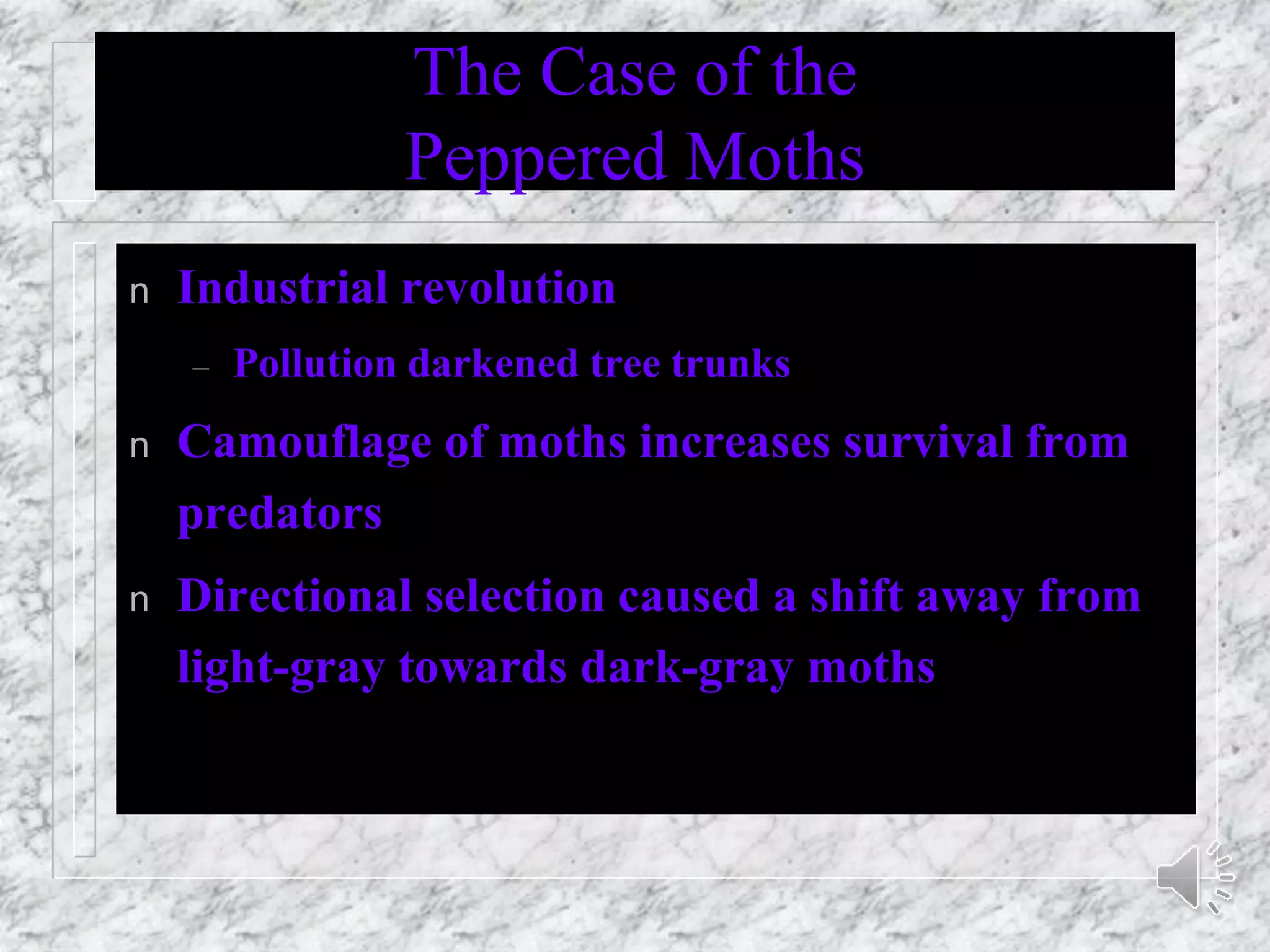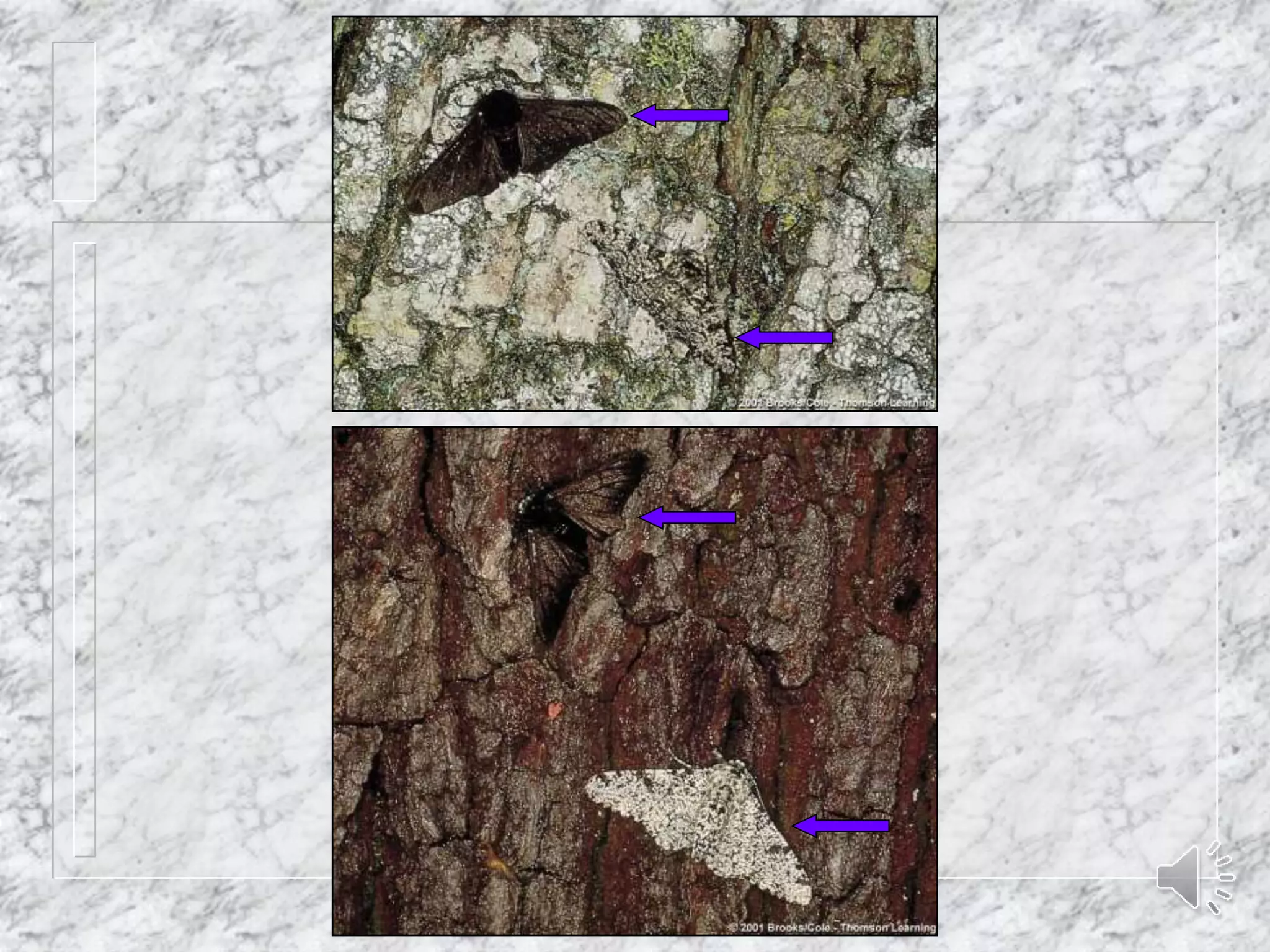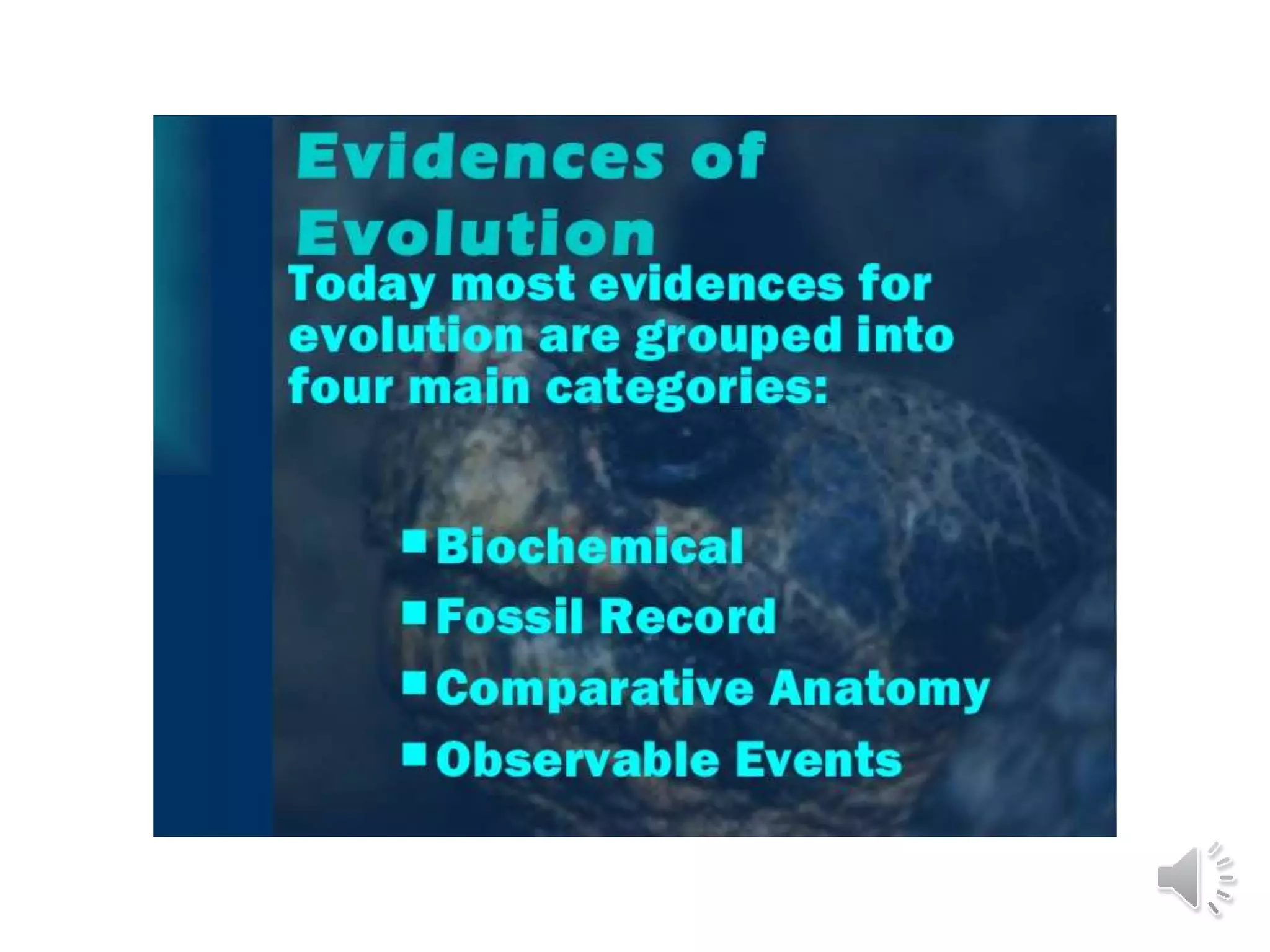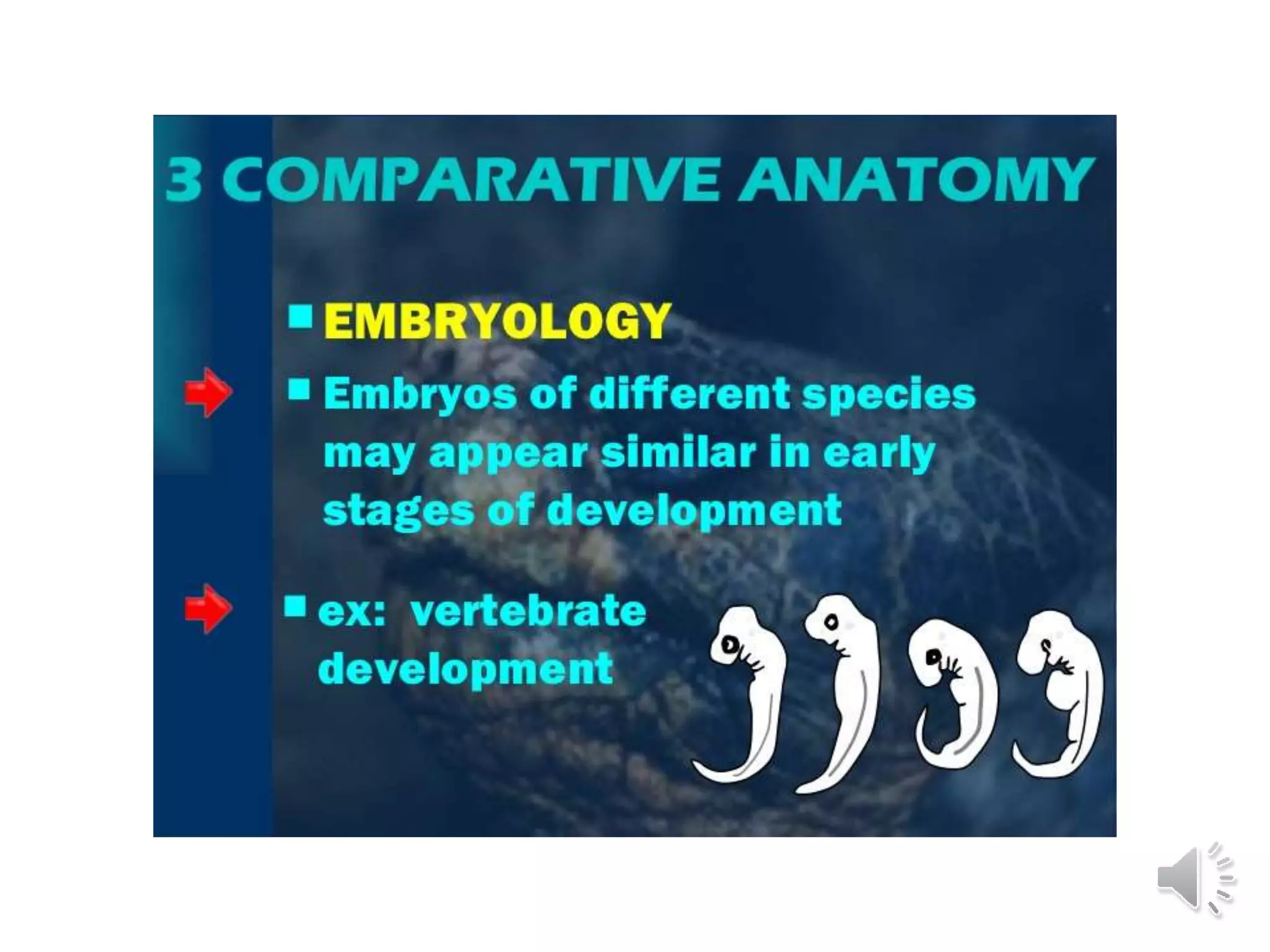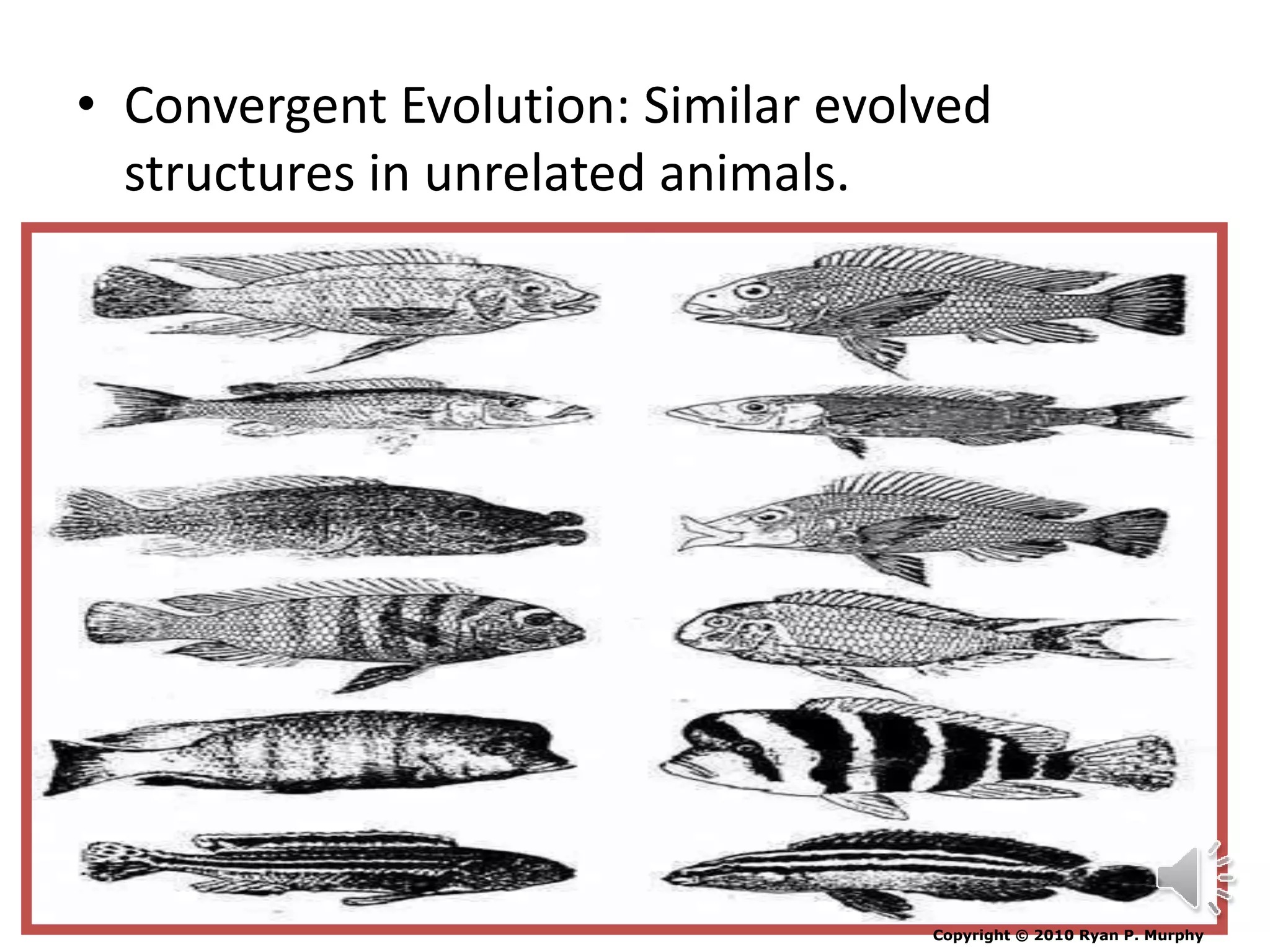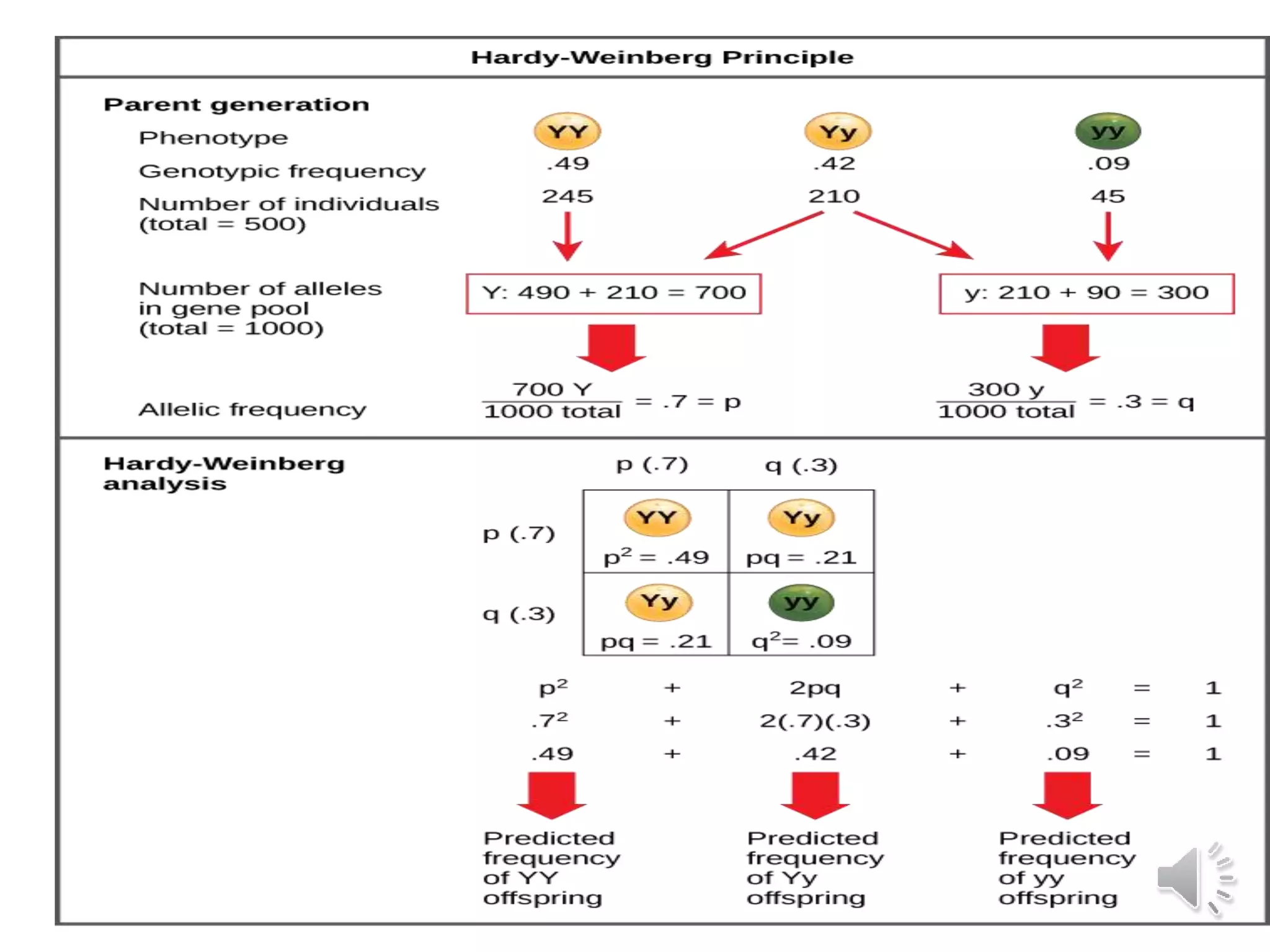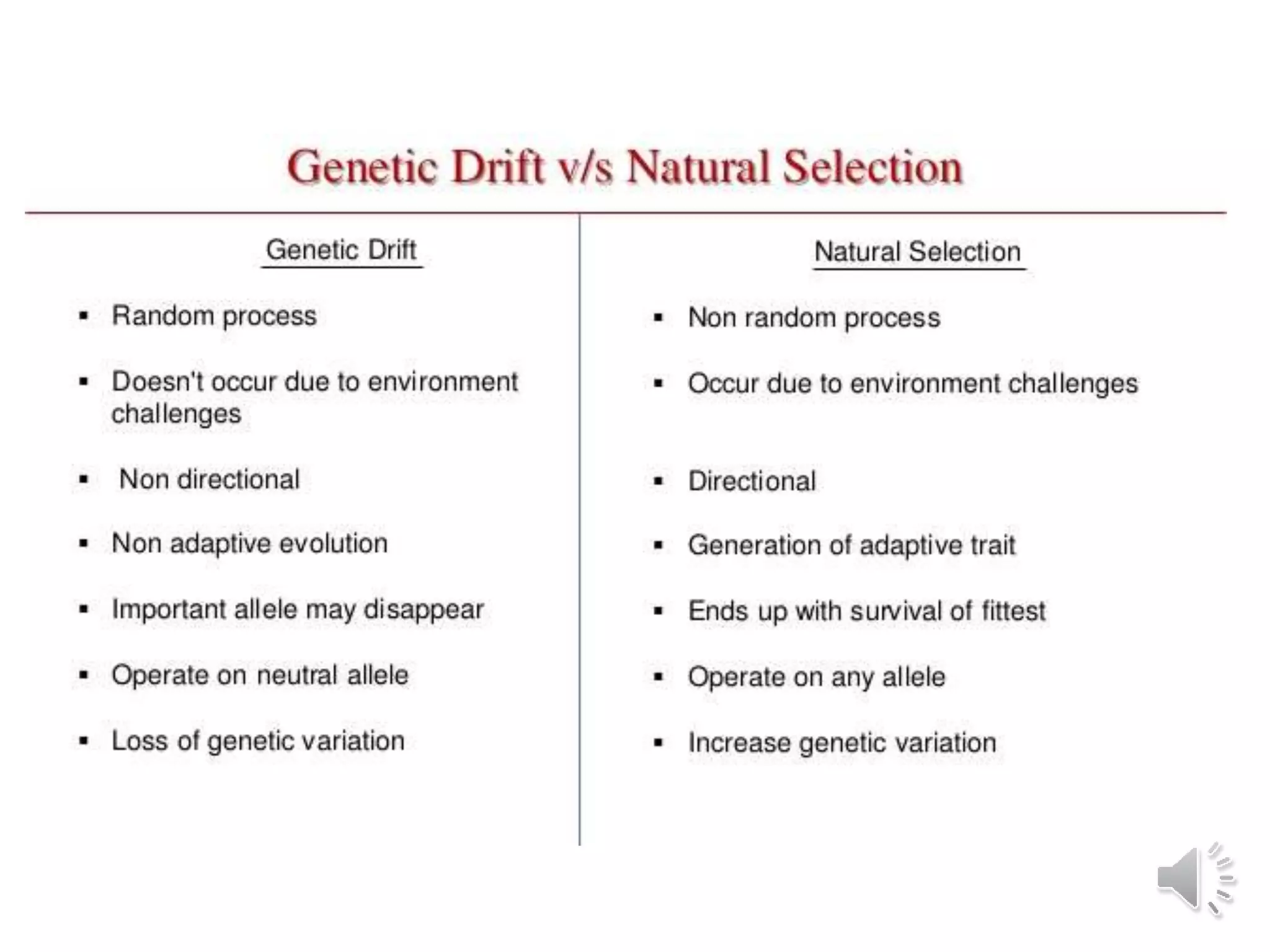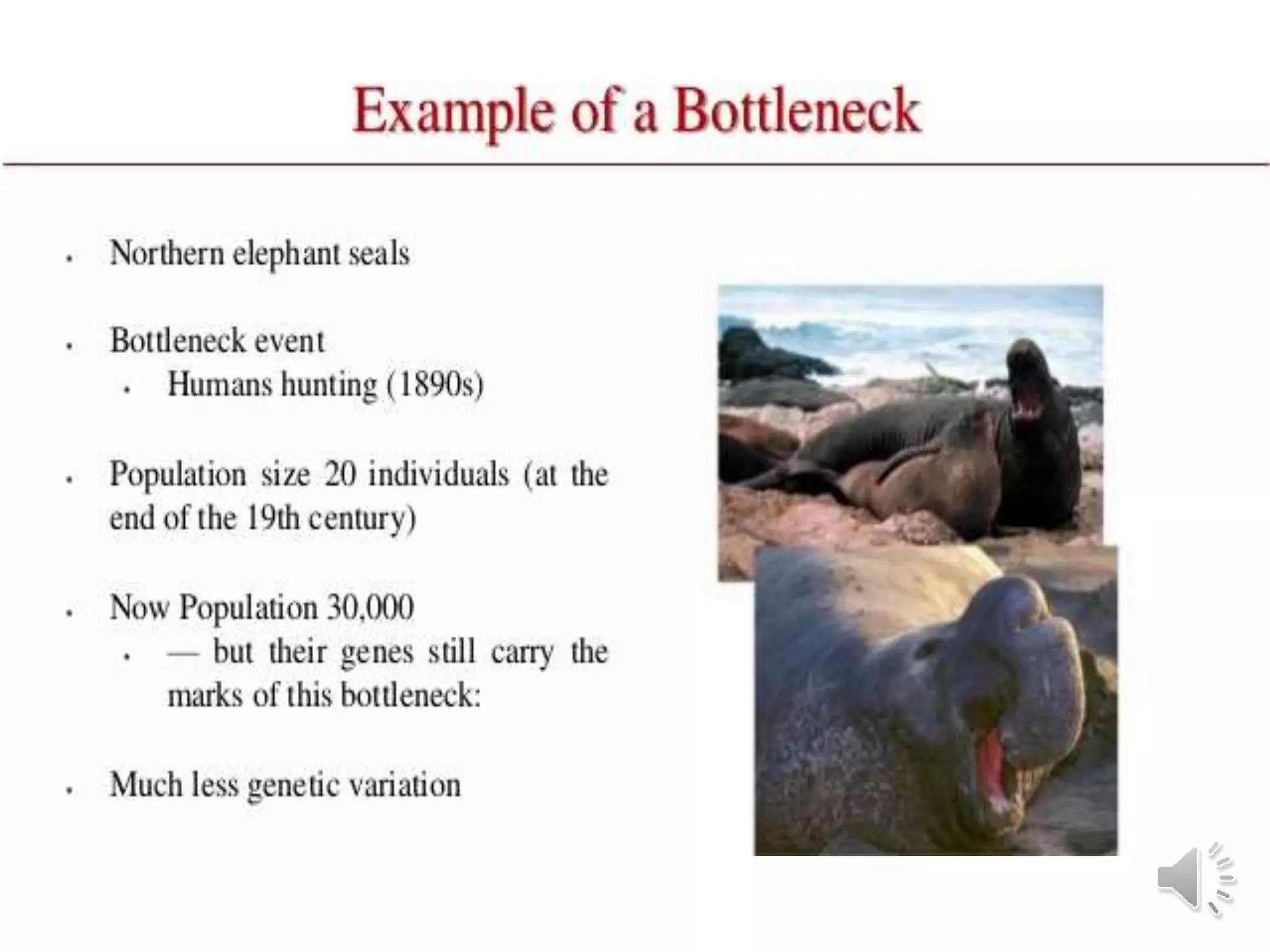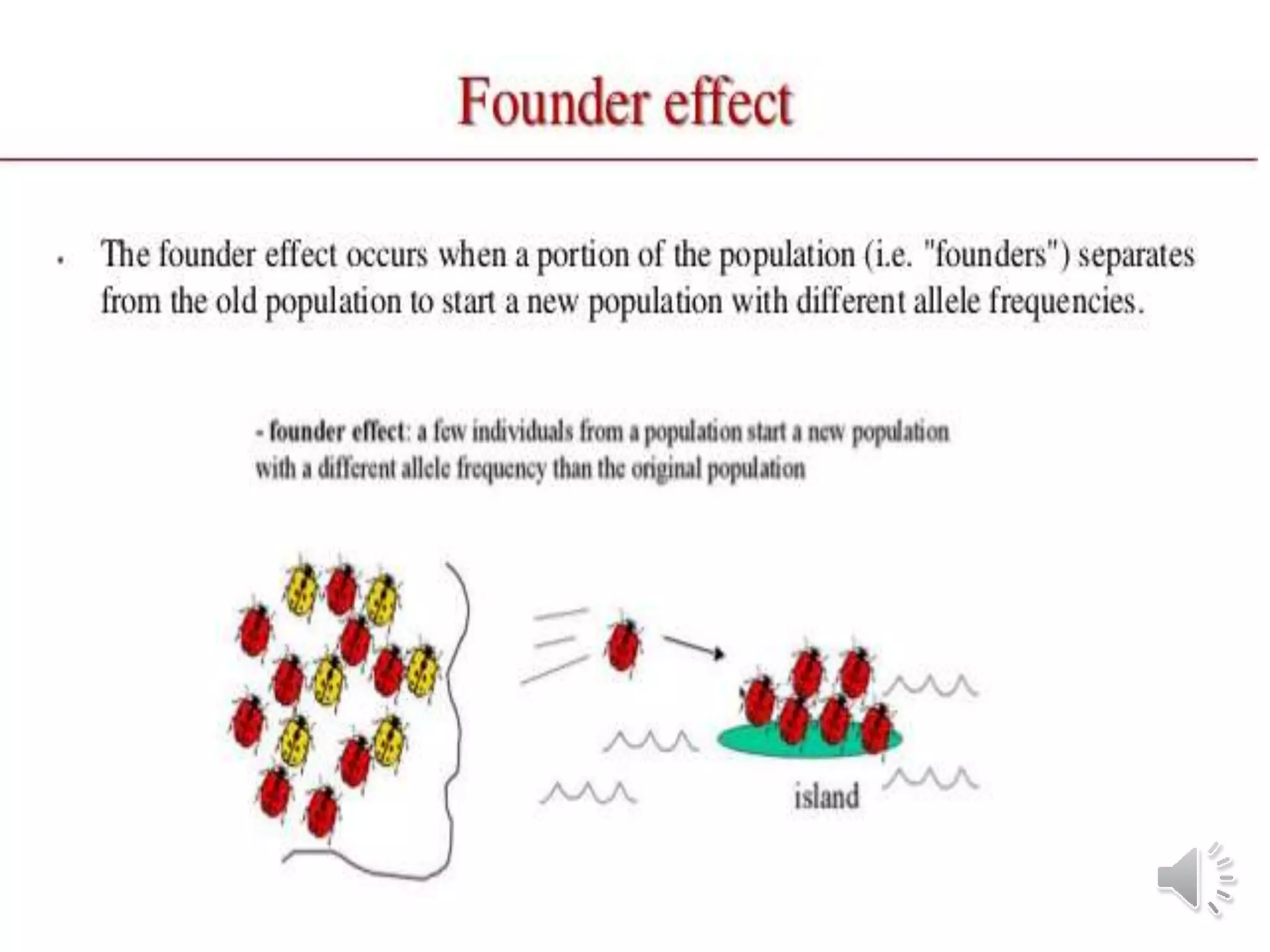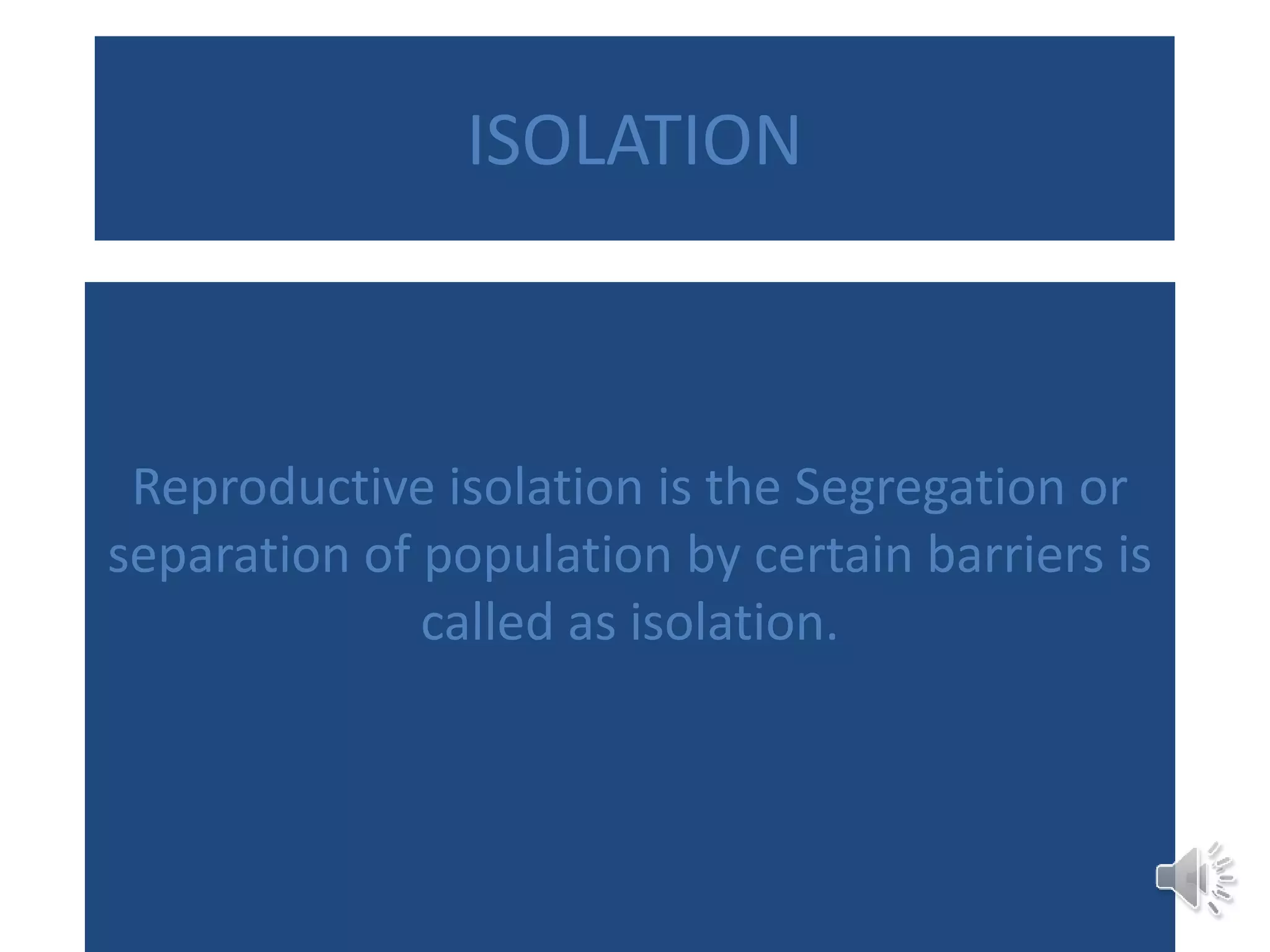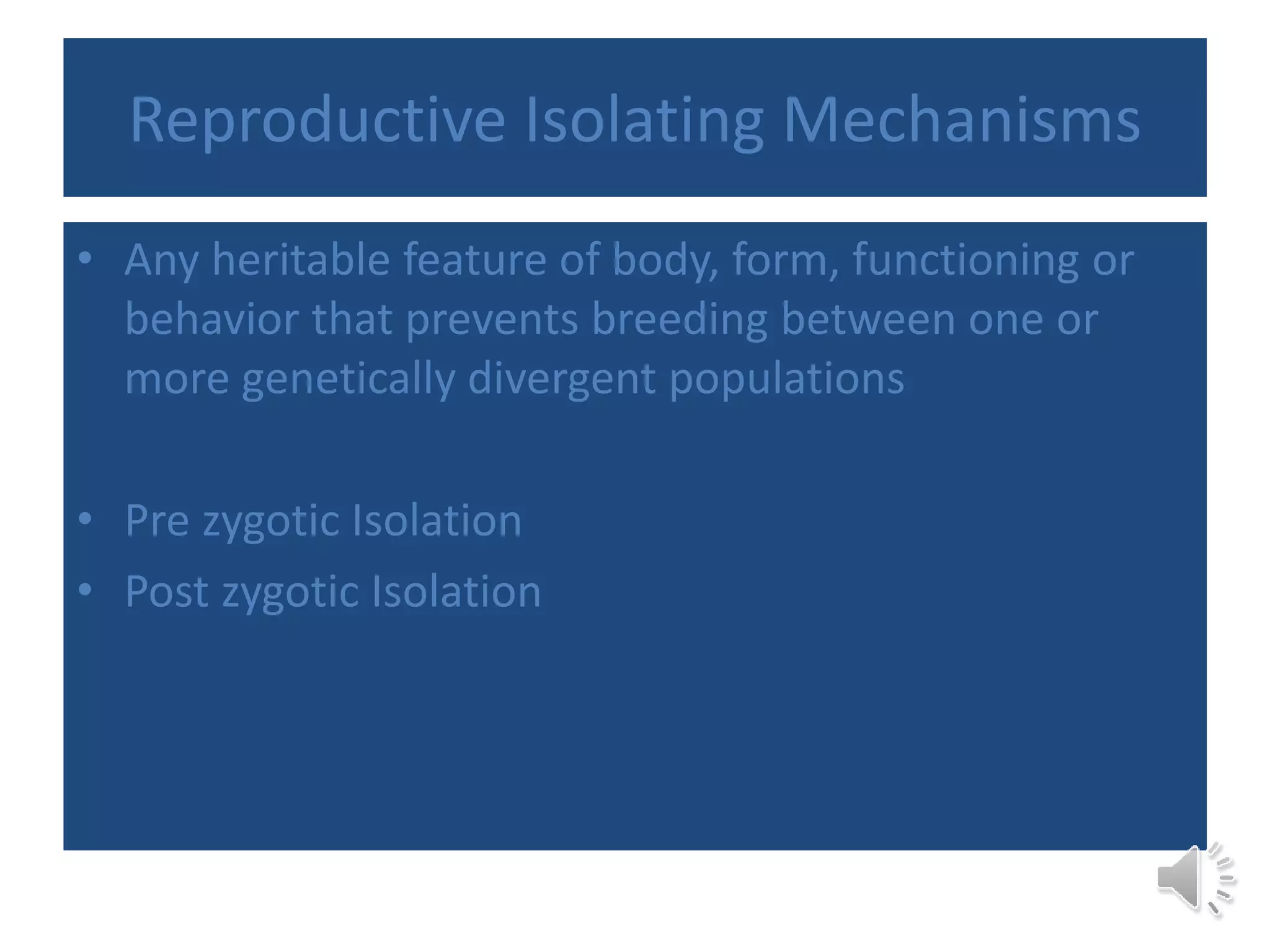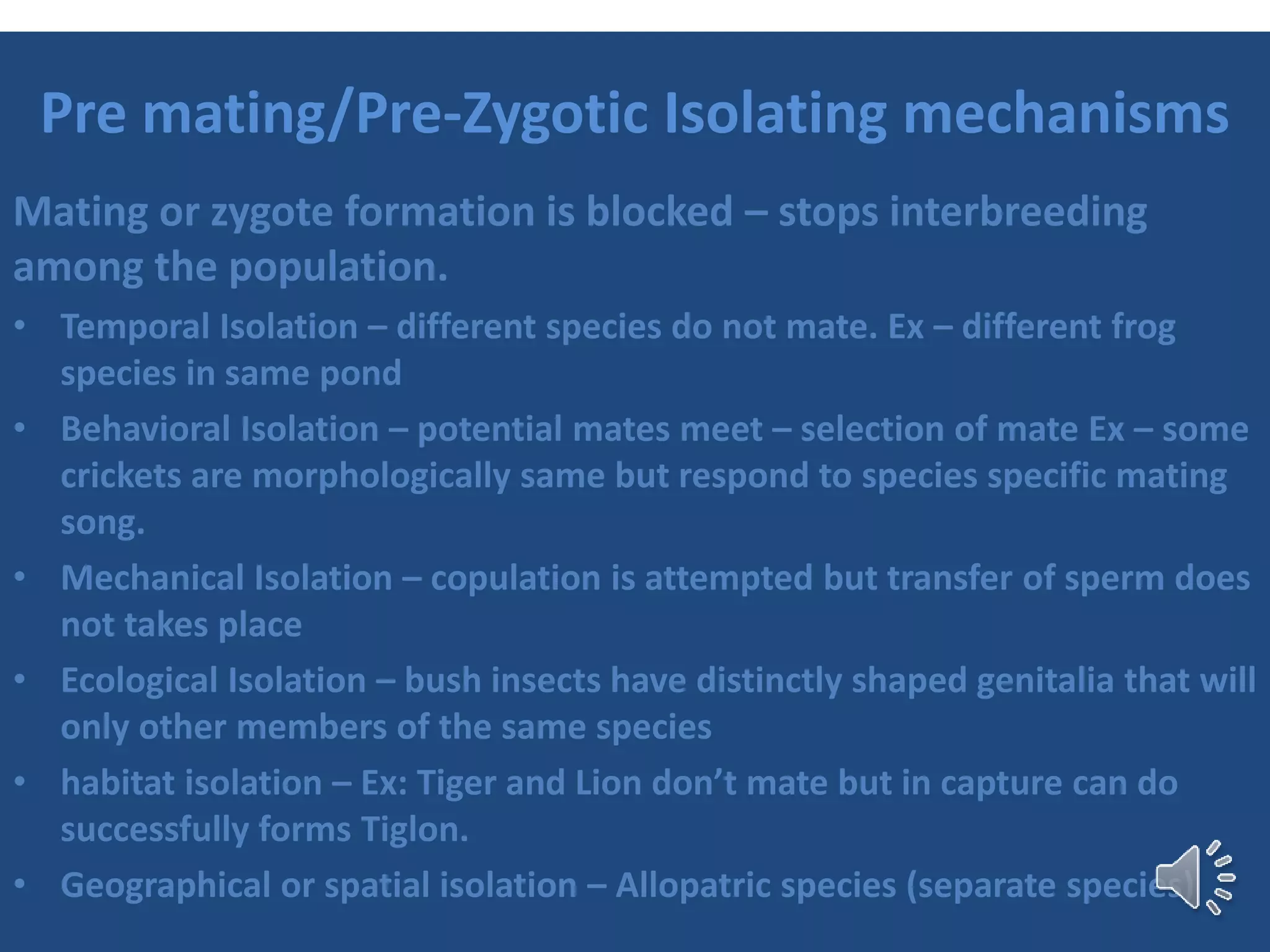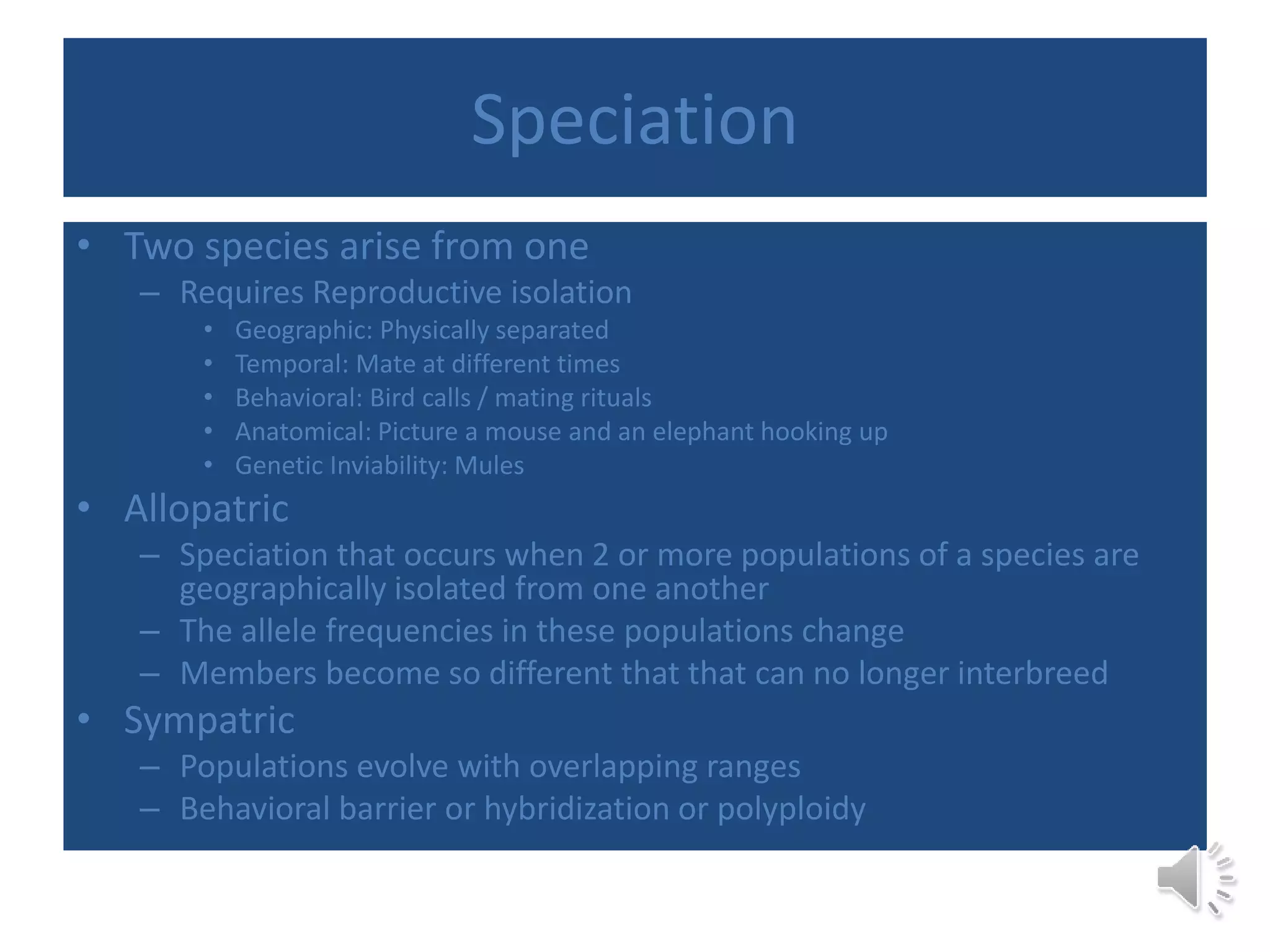The document discusses various theories and concepts related to evolution, including Darwinism, microevolution, macroevolution, and neo-Lamarckism, highlighting the roles of natural selection, genetic variation, and reproductive isolation. Evidence supporting evolution is presented through fossil records, comparative anatomy, and molecular biology, demonstrating mechanisms like adaptive radiation and speciation. Additionally, it addresses extinction, emphasizing human impacts on biodiversity and the potential for a sixth mass extinction due to habitat loss and environmental changes.




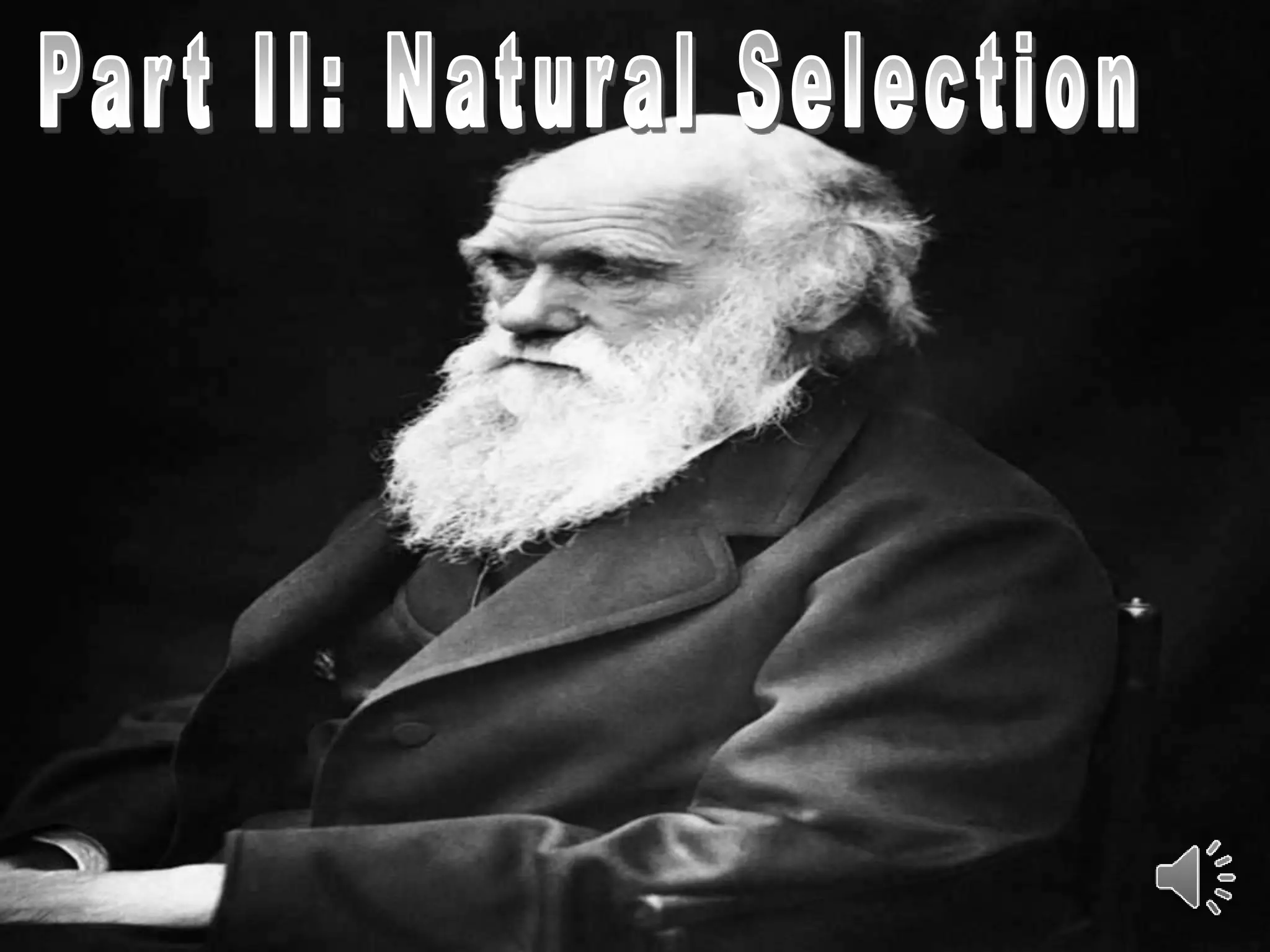
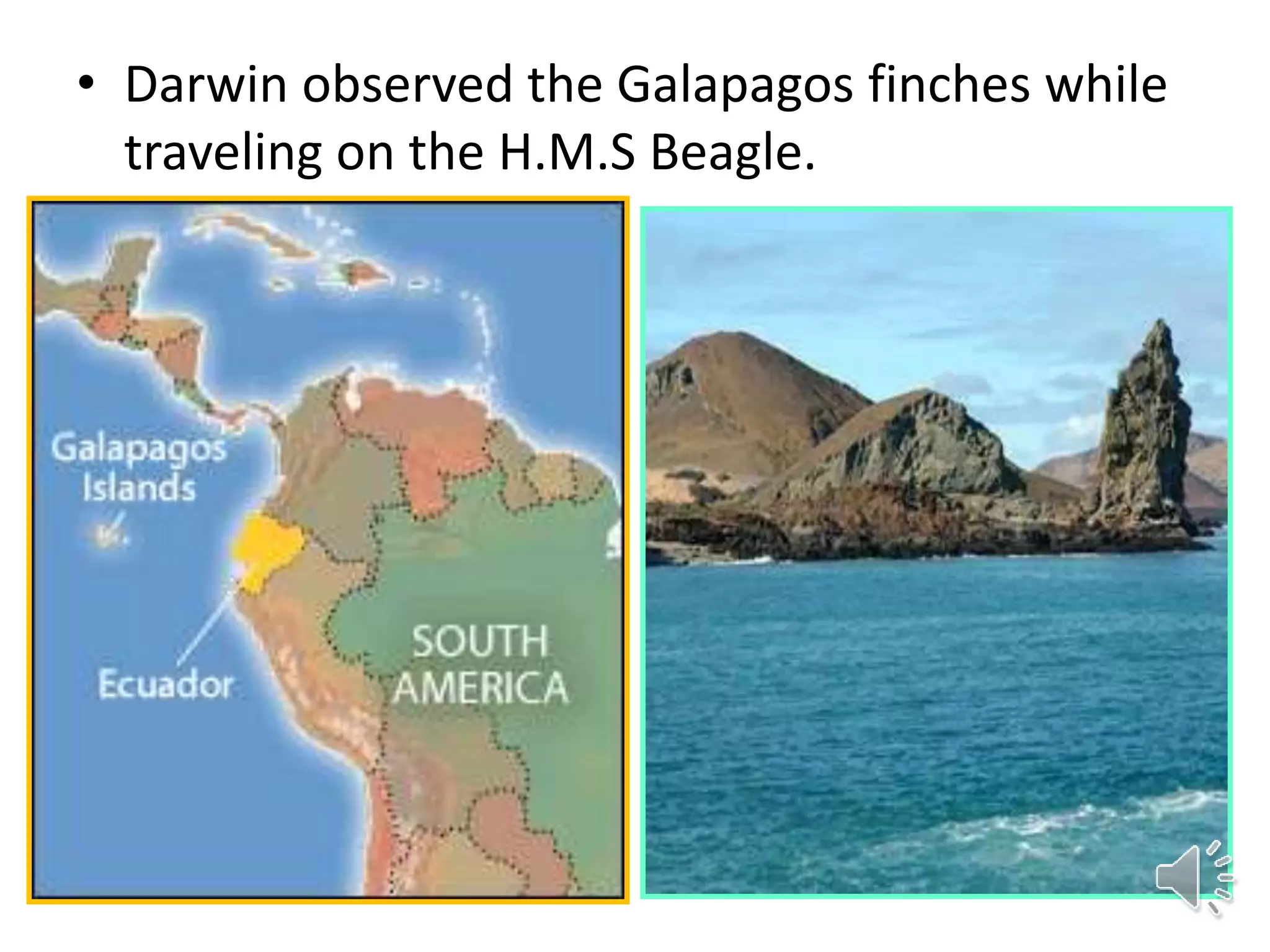
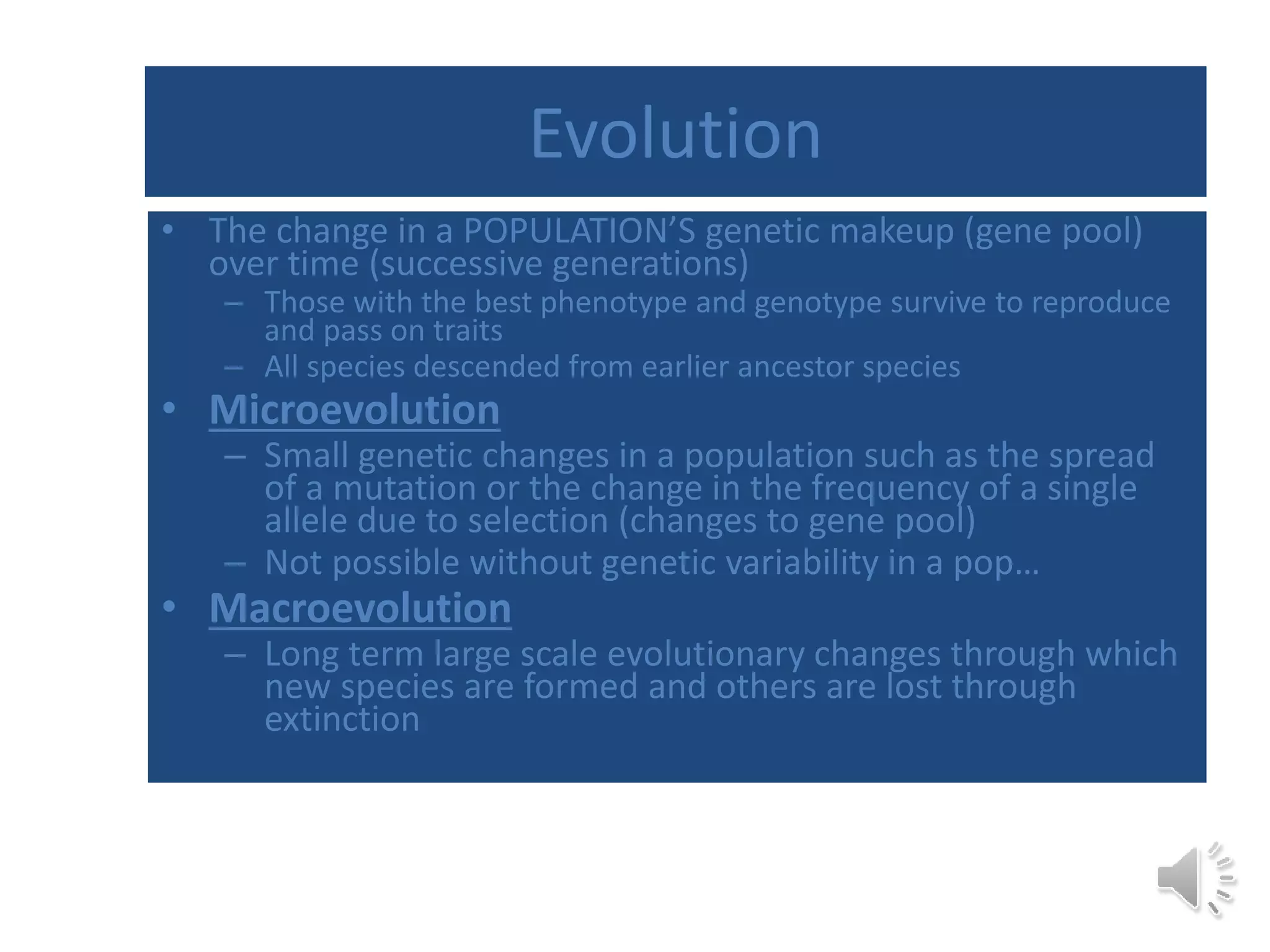
![Microevolution
• Changes in a population’s gene pool over time.
– Genetic variability within a population is the catalyst
• Four Processes cause Microevolution
– Mutation (random changes in DNA—ultimate source of
new alleles) [stop little]
• Exposure to mutagens or random mistakes in copying
• Random/unpredictable relatively rare
– Natural Selection (best produce most offspring)
– Gene flow (movement of genes between pop’s)
– Genetic drift (change in gene pool due to random/chance
events)
• Peppered moth of England; El Nino Galapagos](https://image.slidesharecdn.com/evolutionsemiv-200429113345/75/EVOLUTION-THE-HISTORY-8-2048.jpg)




